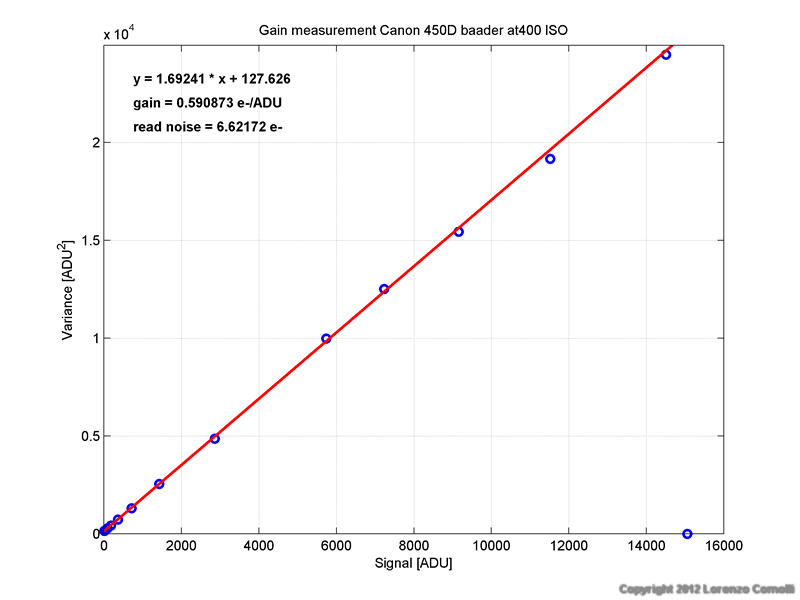|
by Lorenzo Comolli - Written in November 2012 - Thanks to Fabio Coltri and Giuliano Pinazzi for taking all the test images! |

Introduction
In this page you'll find a technical test. Please refer here for an introduction, details and testing method.
Available sensitivities:
Main results
To distinguish between true and software interpolated sensitivities, the best method is to look at the histogram of a nearly uniform image (like a flat field). The result is shown in the figure below, and the conclusion is that ALL the standard sensitivities are true.
Gain and read noise
In this page you'll find a technical test. Please refer here for an introduction, details and testing method.
Available sensitivities:
- standard: from 100 to 1600 ISO with 1 EV steps
Main results
-
Gain. The measured gains
follow accurately the power law as can be seen from the graph. The slope
is nearly exactly equal to one. This means that 1600 ISO is in fact 16
times more sensitive than 100 ISO. Very good.
- Unity gain at 235 ISO
- Read noise. Read noise has a
very nice behavior. It decreases much by increasing sensitivity. From
the trend it seems that, if available, a true sensitivy of 3200 ISO
would have improved the results in low light. For
best results in low light circumstances, use 1600 ISO.
- Dynamic range. Considering
a full well capacity of about 14000 ADU (except at 100 ISO, with 13000 ADU),
the approximate dynamic range is
computed and reported both in the table and graph below. The best
dynamic range
is in the range 100 to 400 ISO. Higher
sensitivities show only a little smaller dynamic range and can be succesfully used, expecially 800 ISO.
To distinguish between true and software interpolated sensitivities, the best method is to look at the histogram of a nearly uniform image (like a flat field). The result is shown in the figure below, and the conclusion is that ALL the standard sensitivities are true.
Gain and read noise
| ISO | gain | read noise | Approx dynamic range |
| [e-/ADU] | [e-] | [dB] |
|
| 100 | 2.3408 |
22.7492 | 62.5 |
| 200 | 1.1755 |
11.9325 | 62.8 |
| 400 | 0.5909 |
6.6217 | 61.9 |
| 800 | 0.2973 |
4.2778 | 59.8 |
| 1600 | 0.1463 |
3.1156 | 56.4 |
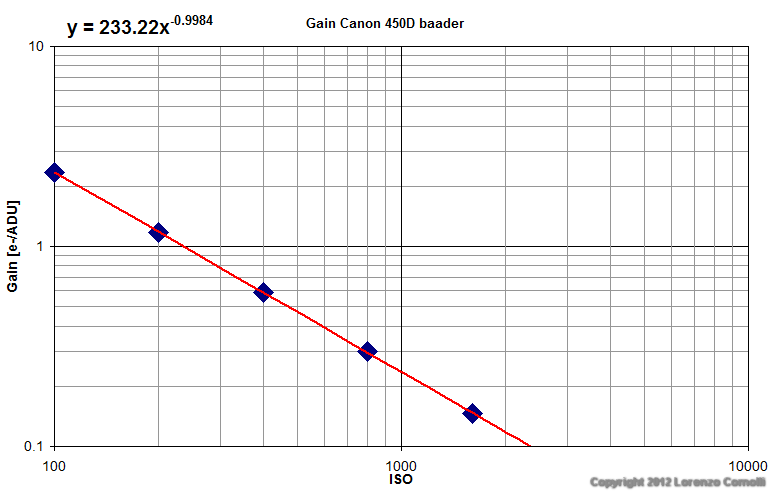
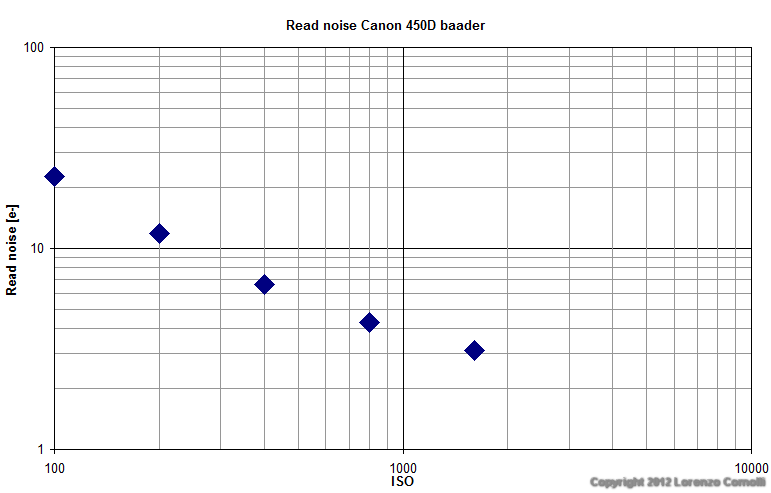
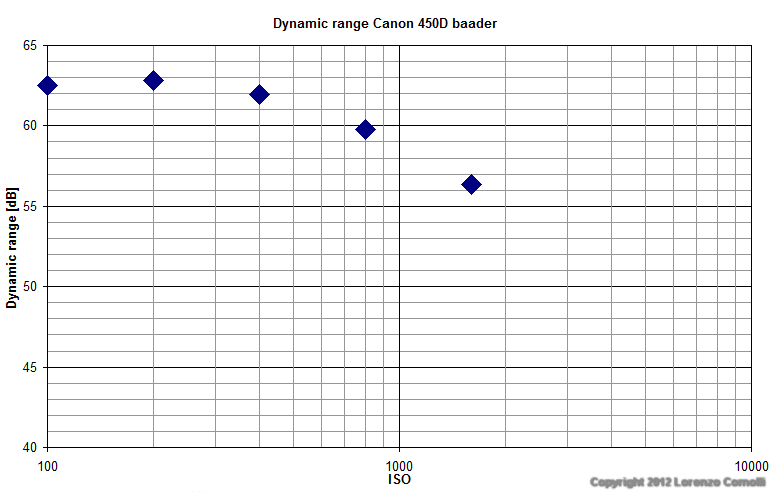
Histograms
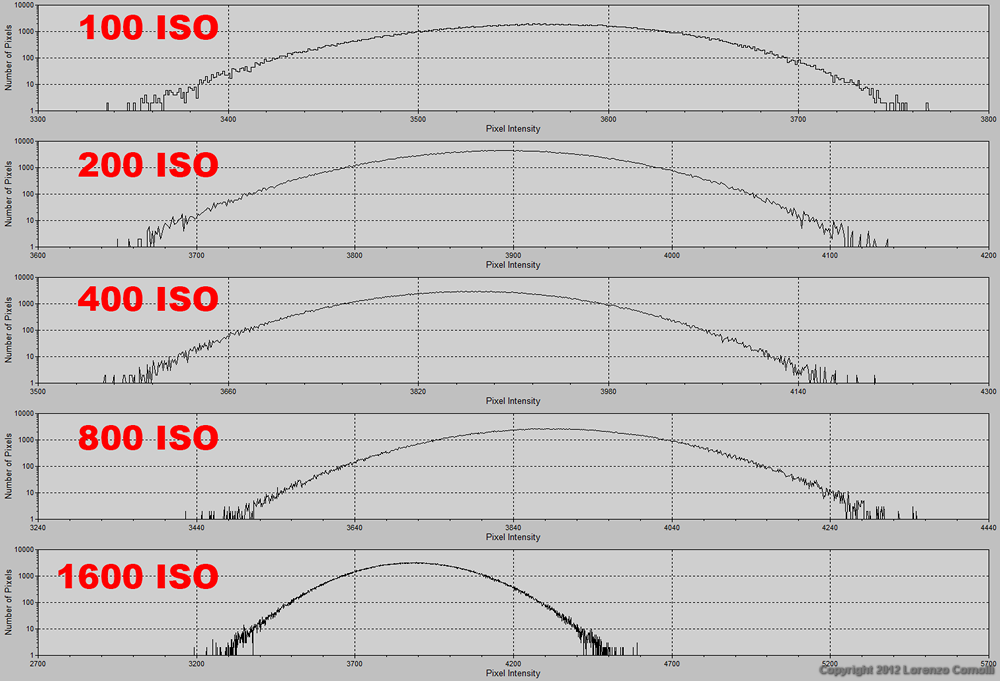
Details of measurements at each ISO setting


